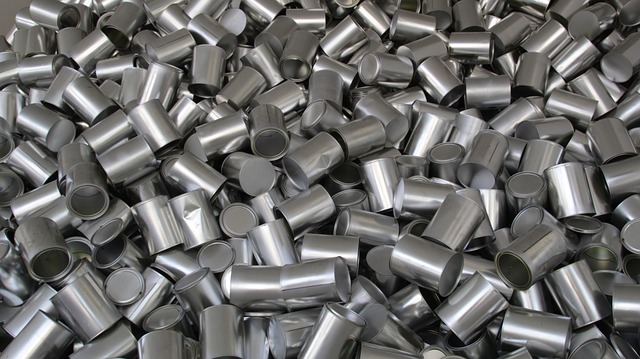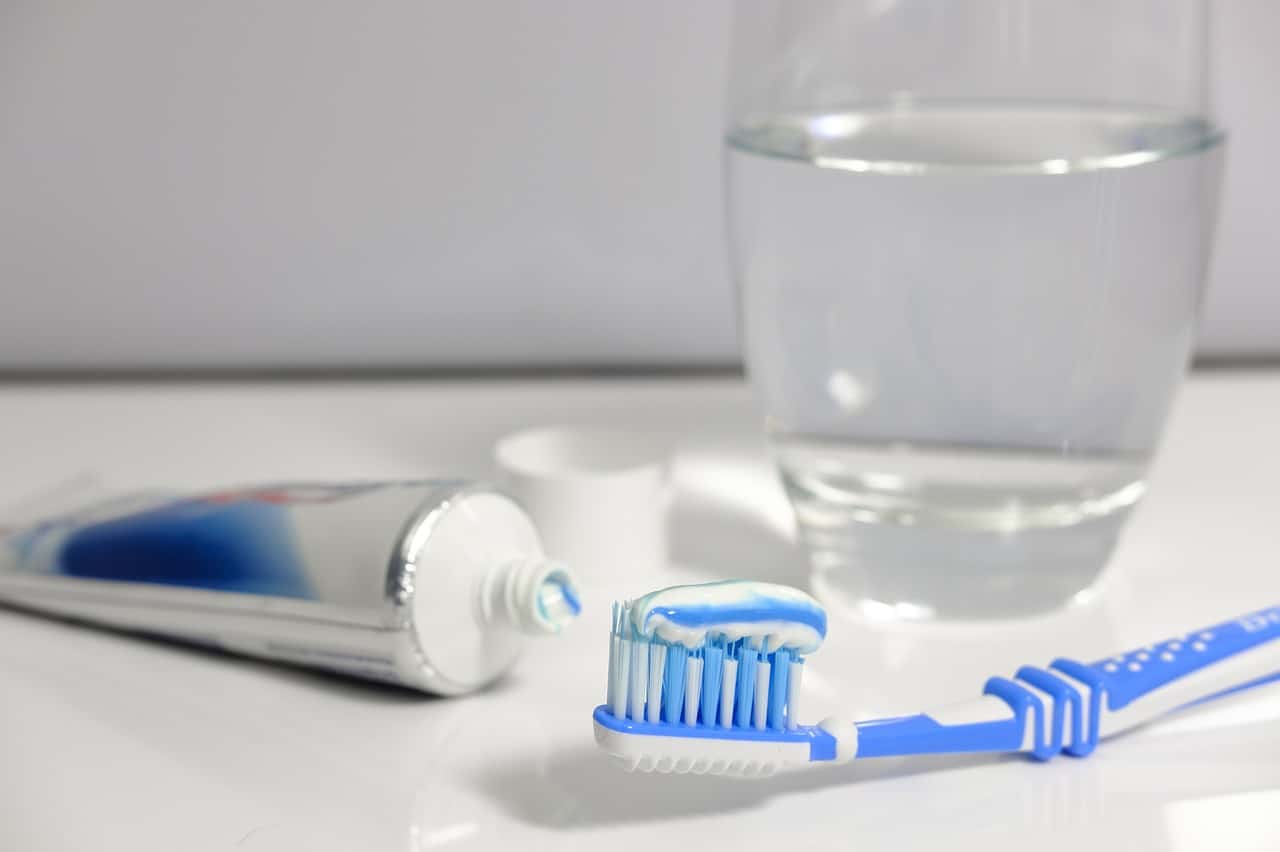Fluoride is a hidden chemical that we often come in contact with from our water and toothpaste. But the question of its safety is very controversial. Some people say that it is necessary for dental health. Others people believe it is a crime to put fluoride in our drinking water and that we should have a right to choose what medicines are in the water supply. This article looks at scientific studies to examine its possible risks, dangers, and side effects to answer the question, is fluoride bad for you?
Contents
History of Fluoride Use
 Fluoride started to be used as a chemical in higher numbers in the 1900s. This is mostly because of the aluminum industry.
Fluoride started to be used as a chemical in higher numbers in the 1900s. This is mostly because of the aluminum industry.
In the 1920s, canning became popular and as a result aluminum production was booming. The effect of more aluminum production was a surplus of sodium fluoride, a waste product of the manufacturing process.(1)
Soon, they started using it in rat poison. This helped the aluminum industry to dispose of its waste profitably.
In 1930, after noticing that people in Bauxite, Arkansas (a key town in aluminum production) had brown-stained teeth, they began to research the reasons. They soon found out that the groundwater contained high amounts of fluoride, and fearing a public health concern, started to test its effects on teeth.(1)
The studies found that the brown-stained teeth had better resistance to developing cavities. Since tooth decay that led to dental cavities was a public health concern, the American Dental Association got involved and began to recommend fluoride as a preventative measure. This led to the beginning of water fluoridation in Grand Rapids, Michigan.
Then, “in 1947, Oscar R. Ewing(a long-time ALCOA lawyer), was appointed head of the Federal Security Agency, a position that placed him in charge of the US Public Health Service. Under Ewing, a national water fluoridation campaign began.” It was meant as a way to promote dental health and prevent tooth decay.(2)
Since then, it has been a very controversial topic. Some studies show that fluoride causes a variety of health issues, while others say that it is safe. Although the dangers are debatable, we will look at the possible risks that are brought up in studies. This way you can make the best decision for your health.
Possible Dangers and Risks of Fluoride
1. Impairs Brain Development
 The National Institute of Health came to the conclusion that “children in high-fluoride areas had significantly lower IQ scores than those who lived in low fluoride areas.” This appeared to be a result of fluoride having an impact on brain health by causing memory and learning issues. (3)
The National Institute of Health came to the conclusion that “children in high-fluoride areas had significantly lower IQ scores than those who lived in low fluoride areas.” This appeared to be a result of fluoride having an impact on brain health by causing memory and learning issues. (3)
Also, after examining other studies, they also found the possibility that “fluoride may be a developmental neurotoxicant that affects brain development at exposures much below those that can cause toxicity in adults.”(3)
If you have been exposed to fluoride, there is hope of improving brain health. This article show you how to get smarter in 9 different ways.
2. Birth Defects And Lower Fertility
In literature published by the National Academies Press, they studied its effects on reproduction.
By examining a variety of animal and human studies, they came to the conclusion that high doses of fluoride potentially affect reproductive health. Also, there was a link between increasing fluoride exposure to decreasing fertility rates in both males and females.(7)
These studies also show the possibility of issues related to fetal development and disorders such as Down’s Syndrome and Sudden Infant Death Syndrome.
3. Causes Cancer
Fluoride exposure has been continually linked to a specific bone cancer called osteosarcoma. It began in 1990 when the United States National Toxicology Program came to the conclusion that fluoride causes this cancer. It was based on the findings of a study that was performed where male rats had a higher than average occurrence of osteosarcoma. (5)
Researchers believe that this is because fluoride collects in bones.
4. Thyroid Issues
The possibility also exists that fluoride disrupts normal thyroid function. By forming a bond with iodine molecules, it competes with the thyroid gland. Over years, the thyroid becomes deficient in iodine and stops producing normal thyroid hormones.
The relationship between fluoride and thyroid function was linked in a 2005 study. The study found that “47% of children living in a New Delhi neighborhood with average water fluoride level of 4.37 ppm have evidence of clinical hypothyroidism attributable to fluoride.”(6)
How To Reduce Fluoride Intake
Although the American Dental Association stands by the opinion that fluoride is safe to use, some people choose to be cautious. This is done by taking steps to reduce fluoride exposure.
Since the primary sources of fluoride exposure are water and toothpaste, most focus on these two areas.
1. Toothpaste
 There are two options to brush your teeth without fluoride.
There are two options to brush your teeth without fluoride.
First off, use fluoride-free toothpaste. Many supermarkets and chain pharmacies are now selling fluoride-free versions of toothpaste. Often there is not a large selection, but if you look hard enough you will find one. Tom’s of Maine is a more natural brand that has a couple varieties of fluoride-free flavors.
Also, try to choose one that has peppermint in it. One of the uses of peppermint essential oil is an antibacterial. Therefore it has cavity fighting power.
If you can’t find any in your local market or pharmacy, then check out your local health food store.
Secondly, many people are now starting to make their own toothpaste. This website has a basic homemade toothpaste recipe that not only is safer to use, but also helps to reduce waste such as plastic and packaging. Check out naturemadecures.com/our-environmental-impact to learn other ways to benefit the environment.
2. Water
Reducing your fluoride intake from water can be a little more difficult. Not only do we drink fluoridated water, but we also wash our bodies in it and eat products containing it.
The first step is to be more aware of the water you are drinking.
By drinking water that is either reverse-osmosis filtered or distilled, you can be sure your drinking water is fluoride-free. Most tap water, well water, and bottled water all contain fluoride. The good news is that as people become more aware of the potential dangers, more bottled water brands switch to fluoride-free. Also, and even some towns have stopped water fluoridation.
 Secondly, if you choose to go a step further, you can stop washing your hands and showering in fluoridated water.
Secondly, if you choose to go a step further, you can stop washing your hands and showering in fluoridated water.
Many homeowners choose to buy a home reverse-osmosis water filtration system. Although they are not cheap, this is the easiest and most effective way to remove fluoride in the home.
Finally, to minimize your exposure to fluoride you have to reduce the number of processed foods you buy.
Any item that you buy that contains water most likely also has fluoride. So start reading the labels, or better yet, just buy less processed food. On top of containing fluoride, things like soda contains other dangerous preservatives and food coloring that should be avoided anyway. You can read more about the dangers of soda here. By switching to a whole food plant based diet, you can be sure you will be on the path to a healthier life.
Summary
Although there are plenty of studies that support the conclusion that fluoride exposure is a health concern in high doses, the research is inconclusive at lower levels.
What makes fluoride research difficult at low levels is that other factors could possibly influence the findings such as other contaminants in the water.
Regardless, many people that find out about the possible harmful effects of fluoride at high doses choose to be more mindful of their fluoride exposure. It is challenging to monitor the exact amount of total fluoride intake.
If you choose to try to minimize the amount of fluoride, it is a good idea to start by choosing better dental products and where you are getting your water from.
References:
(2) https://thetruthaboutcancer.com/fluoride-in-water/
(3) https://www.ncbi.nlm.nih.gov/pmc/articles/PMC3491930/
(4) https://www.hsph.harvard.edu/news/features/fluoride-childrens-health-grandjean-choi/
(5) https://www.cancer.org/cancer/cancer-causes/water-fluoridation-and-cancer-risk.html
(6) https://www.ncbi.nlm.nih.gov/pmc/articles/PMC3956646/
(7) https://www.nap.edu/read/11571/chapter/8#191
